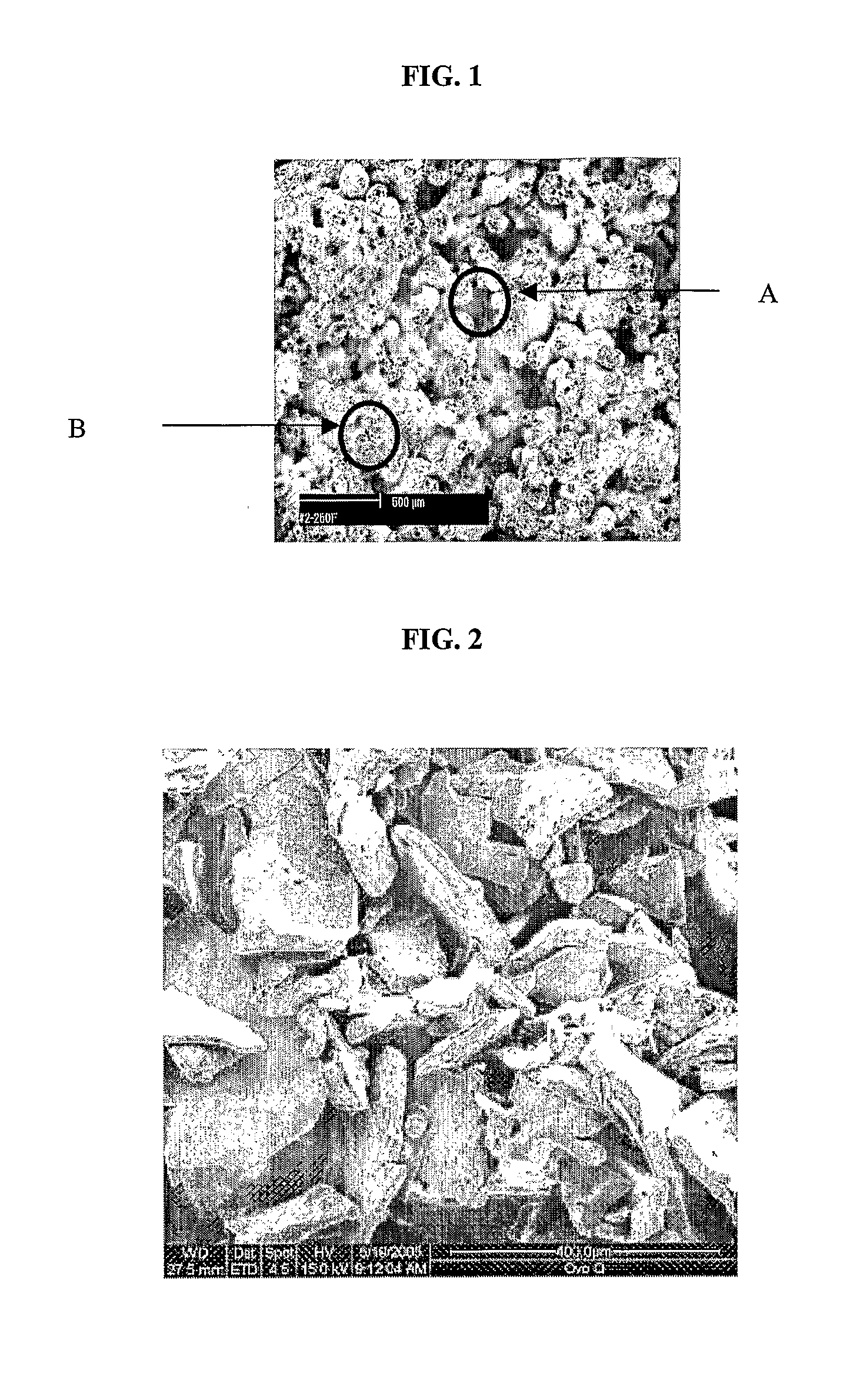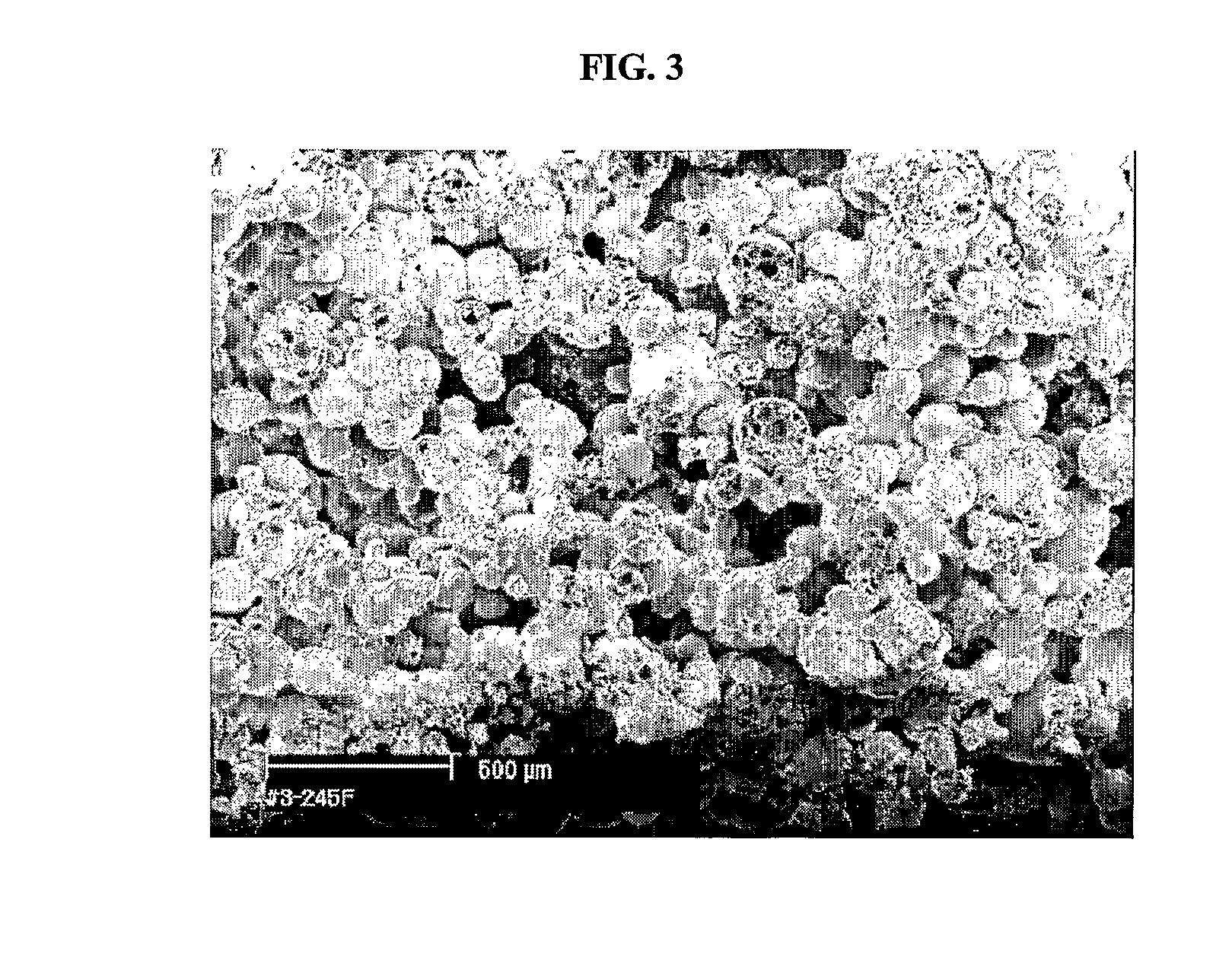Sintered powder confection
a technology of sugar powder confection and powdered powder, which is applied in the field of sugar powder confection, can solve the problems of brittleness, dry, hard products of this type of process, etc., and achieve the effect of porous and crisp structur
- Summary
- Abstract
- Description
- Claims
- Application Information
AI Technical Summary
Benefits of technology
Problems solved by technology
Method used
Image
Examples
example 1
[0051] A sweetened milk mix was foam spray-dried using nitrogen gas injection, creating a low-density and high porous (30-70% closed porosity) spray dried sweet milk powder. Initial formulations of the sweet milk mix were 70% whole milk powder, 15% sucrose and 15% maltodextrin (dry basis). This powder was then used to loose-fill traditional moulds. The moulds were covered and heated in a convection oven to elevate the temperature of the powder above that of its glass transition temperature (Tg). No compaction was used prior to heating. The oven was set at 280° F. (ca. 137° C.) and the confection was left in the oven for about 10 minutes. The confectionary was allowed to cool and removed from the moulds.
[0052] This piece, or confectionery center, was then enrobed in either traditional chocolate or a variety of compound coatings.
[0053] The final product is light and quick to dissolve in the mouth, and does not stick to the teeth. It delivers a high level of milk solids (70%) and has...
example 2
[0054] A dairy based mix was dried to create a low-density and highly porous (15-70% closed porosity) powder. Initial formulations of the dairy based mix were 70% whole milk powder, 0-15% sucrose and 15-30% a low DE corn syrup solids (dry basis). This powder can then be loose filled into traditional moulds, made into pre-formed sheets or pre-formed individual pieces. The powder is then heated in a covered mould or the powder is uncovered and subjected to a humid atmosphere (12-21% RH) to go above the glass transition of the powder in order to sinter the product. No compaction is used prior to heating. The oven was set at 240° F. (115.5° C.) and the confection was left in the oven for about 8 minutes. The confectionery product is then allowed to cool to reach a solid state. This product is characterized by a density of 0.1-0.6 g / ml, a closed porosity of 15 to 70%, an open porosity of 10-45%, a total porosity of 15-90%.
[0055] This piece or confectionery center was then enrobed in eit...
example 3
[0057] Two or more powders / particulates with different physical properties can be used to form unique products. Powders / particulates can be either amorphous or crystalline (one has to have at least a portion in the glassy state and one has to have a minimum closed porosity so that when the two materials are blended the closed porosity of the blend is at least 15%). Examples of powders include but are not limited to milk powder, fruit powder, Nesquik, Milo, flavors and colors. The products produced by the following applications are characterized by a density of 0.1-0.6 g / ml, a closed porosity of 15 to 70%, an open porosity of 10-45%, a total porosity of 15-90%. This application can be used in the following ways:
PUM
| Property | Measurement | Unit |
|---|---|---|
| porosity | aaaaa | aaaaa |
| porosity | aaaaa | aaaaa |
| porosity | aaaaa | aaaaa |
Abstract
Description
Claims
Application Information
 Login to View More
Login to View More - R&D
- Intellectual Property
- Life Sciences
- Materials
- Tech Scout
- Unparalleled Data Quality
- Higher Quality Content
- 60% Fewer Hallucinations
Browse by: Latest US Patents, China's latest patents, Technical Efficacy Thesaurus, Application Domain, Technology Topic, Popular Technical Reports.
© 2025 PatSnap. All rights reserved.Legal|Privacy policy|Modern Slavery Act Transparency Statement|Sitemap|About US| Contact US: help@patsnap.com


